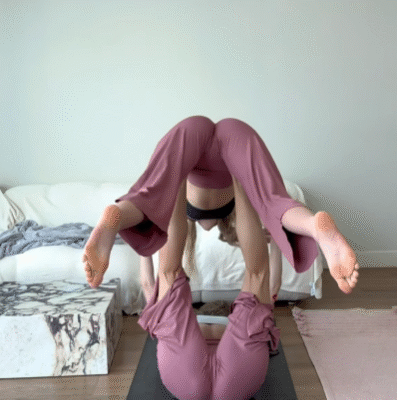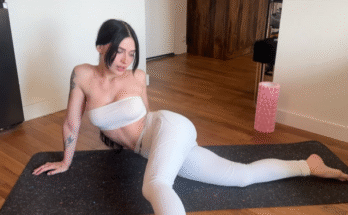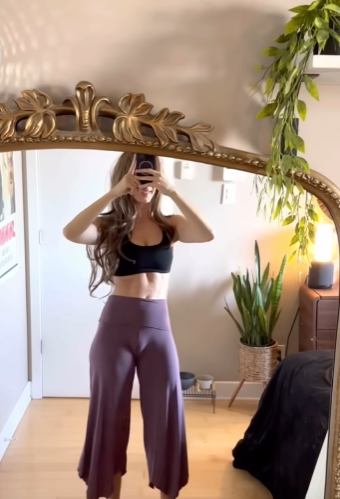
Yoga is a practice that unites the body, mind, and breath. Every pose has its purpose—some energize, some relax, and some build strength. Among them, the transition from Cobra Pose (Bhujangasana) to High Plank Pose (Phalakasana) is a powerful movement that blends grace, awareness, and strength. Though it seems simple, this flow carries depth and benefits for both beginners and advanced practitioners. Let’s explore what this transition means, how to practice it correctly, and the physical and mental rewards it offers.
Understanding Cobra Pose
Cobra Pose, known in Sanskrit as Bhujangasana, is often part of the Sun Salutation sequence. It is a gentle backbend performed while lying on the stomach. The pose symbolizes the rising of a cobra, chest lifted, strong and alert.
How to do Cobra Pose:
- Begin lying on your stomach with legs extended back, tops of the feet pressing into the mat.
- Place your palms under your shoulders, elbows close to your ribs.
- Inhale and gently lift your chest off the ground, rolling your shoulders back.
- Keep your pelvis rooted on the mat, avoiding unnecessary strain on the lower back.
- Gaze forward or slightly upward.
Cobra Pose stretches the spine, opens the chest, and strengthens the shoulders. It awakens the body with a surge of energy, just like a cobra rising from rest.
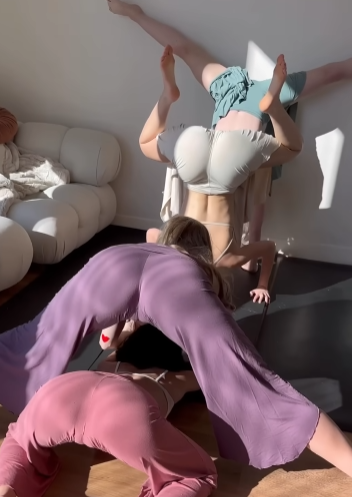
Understanding High Plank Pose
High Plank Pose, or Phalakasana, is a foundational posture in yoga. It looks similar to the top of a push-up. The pose builds core strength, balance, and endurance.
How to do High Plank Pose:
- Begin on your hands and knees, shoulders over wrists.
- Step both feet back, straightening your legs.
- Engage your core, pressing heels back and crown of the head forward.
- Keep your body in a straight line—from shoulders to hips to heels.
- Press firmly into your palms, spreading your fingers wide.
This pose is not just about arm strength; it demands engagement of the entire body. Core, glutes, legs, and shoulders all work together to hold you steady.
The Transition: Cobra to High Plank
Moving from Cobra Pose to High Plank Pose may seem simple, but it requires control, awareness, and proper technique. It combines a backbend with a core-activating posture, creating balance between openness and strength.
Step-by-step transition:
- Begin in Cobra Pose with your chest lifted and palms pressing into the mat.
- Tuck your toes under, keeping legs active.
- As you exhale, press firmly into your palms.
- Lift your body away from the mat by engaging your core and thighs.
- Straighten your arms and step into High Plank Pose, aligning shoulders over wrists.
- Hold for several breaths, maintaining steady breathing.
This transition is about flow, not speed. The strength comes from engaging your core and keeping your movements intentional.
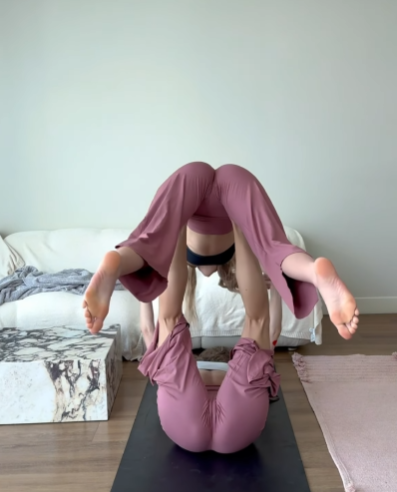
Physical Benefits
The Cobra-to-High-Plank transition delivers a wide range of physical benefits. Practicing regularly strengthens the body in a balanced way.
- Core Strengthening
High Plank Pose challenges your abdominal muscles, including the deep stabilizers. Transitioning from Cobra trains your core to support spinal movement. - Improved Posture
Cobra Pose opens the chest and stretches the spine, counteracting the effects of slouching. Following it with Plank stabilizes the spine with strength, reinforcing healthy posture. - Arm and Shoulder Power
Pushing off the ground into Plank builds shoulder endurance and arm strength, vital for other yoga poses like Chaturanga and arm balances. - Spinal Flexibility and Stability
Cobra stretches the spine in extension, while Plank reinforces spinal neutrality. Together, they cultivate flexibility and control. - Leg Engagement
Though often overlooked, your thighs and calves activate strongly in High Plank, making this transition a full-body workout.

Mental and Emotional Benefits
Yoga is not only physical—it is also a practice of mindfulness. Moving from Cobra to High Plank provides several inner benefits:
- Awareness of Transition
This flow reminds us that strength and openness must coexist. It mirrors life: sometimes we expand (Cobra), and sometimes we stabilize (Plank). - Focus and Concentration
The transition requires precision. Staying mindful of body alignment trains focus, quieting scattered thoughts. - Confidence and Resilience
Mastering this movement builds self-confidence. Over time, holding Plank longer teaches resilience and perseverance. - Balance Between Effort and Ease
Cobra represents ease and openness, while Plank symbolizes effort. Practicing the two together teaches balance.
Common Mistakes to Avoid
Many practitioners unknowingly develop poor habits in this flow. Awareness prevents injury and builds better form.
- Overarching the Lower Back in Cobra
Relying only on the lower back creates strain. Instead, engage the entire spine and press through the legs. - Dropping the Hips in Plank
A sagging midsection places stress on the lower back. Keep hips aligned with shoulders and heels. - Shoulders Up by the Ears
In both poses, shoulders should roll back and down. Tension in the shoulders limits movement and can cause discomfort. - Holding Breath
Many forget to breathe while concentrating on alignment. Smooth, steady breath is essential.
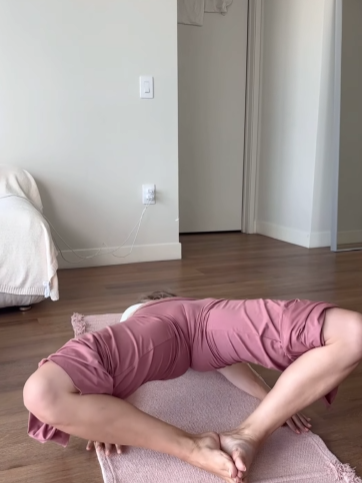
Variations and Modifications
Every body is different, and yoga offers variations to suit all practitioners.
- Gentler Transition:
Instead of going straight from Cobra to High Plank, move first into Tabletop (hands and knees) before stepping back into Plank. - Knees Down Plank:
Beginners can lower their knees in Plank to reduce intensity while still working the core and shoulders. - Upward Facing Dog Variation:
More advanced practitioners can replace Cobra with Upward Facing Dog before flowing into High Plank for greater chest opening.
Practicing in a Sequence
Cobra to High Plank often appears within Sun Salutations or Vinyasa flows. A common sequence may look like this:
- Begin in Downward Dog.
- Flow forward into Cobra.
- Transition into High Plank.
- Lower to Chaturanga.
- Push back into Downward Dog.
This rhythm connects breath with movement, creating a meditation in motion.
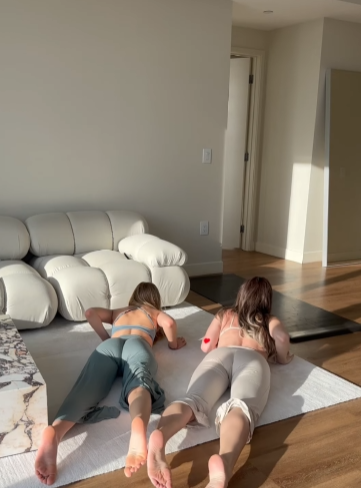
Symbolism and Deeper Meaning
Yoga often carries symbolic undertones. Cobra represents awakening—rising from the ground, ready to see the world. High Plank represents stability and strength—standing firm and unwavering. Together, the transition embodies the balance between expansion and endurance. It teaches us to rise with openness, then hold steady with determination.
Final Thoughts
The transition from Cobra Pose to High Plank Pose is more than just a physical movement—it is a practice of awareness, balance, and strength. By blending the openness of a backbend with the power of a stabilizing core posture, this flow strengthens not only the body but also the mind.
For beginners, it’s a lesson in alignment and patience. For advanced practitioners, it’s a chance to refine awareness and deepen inner focus. Each time you move from Cobra to High Plank, remember: it’s not about rushing to the next posture, but about feeling every breath, every muscle, every moment of transition.
With dedication and mindfulness, this simple yet powerful sequence can become a cornerstone of your practice, reminding you that strength and grace always go hand in hand.
